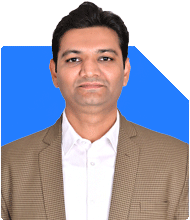
Hello Sir -
I have taken a HDFC Unit Linked pension plan in 2008 and the fund value is approx. 49 lakhs. The policy matures in 2030 and allows for commutation of 1/3rd of fund value (with mandatory annuity for balance 67%). My HDFC Life Relationship manager is suggesting that he will transfer the proceeds of this fund to a new HDFC Smart life pension plan (via surrender of old policy and immediate reinvestment as single premium in the new policy) for a term of 5 years. At the vesting date, I will be allowed to remove 60% of the fund value as tax free commuted pension and will need to take annuity only for remaining 40% of fund value. This is beneficial for me (since tax free commutation will be 60% instead of current 33%).
In such a case, will the surrender of old policy and immediate reinvestment into new smart pension plan be a taxable transaction in India? I have claimed 80CCC benefits for part of premiums paid in the past. HDFC has informed me that the surrender value will not be taxable as no amount is received by me and the full amount is reinvested into the new policy (HDFC will also not do TDS). Is this correct?
Thanks for your advice.
Ans: You have invested in a unit-linked pension plan since 2008.
The current fund value is Rs. 49 lakhs.
The plan matures in 2030.
As per the policy, you can withdraw 33% tax-free and the rest must be used for annuity.
Your relationship manager is suggesting surrender and reinvestment into a new pension plan.
The new plan allows 60% tax-free withdrawal instead of 33%.
You need to evaluate whether this switch is beneficial from a taxation and financial perspective.
Taxation on Surrender of Old Pension Plan
Pension plans under section 80CCC get tax benefits during investment.
If you surrender, the surrender value is taxable as per your income slab.
HDFC claims that no tax will apply as the amount is reinvested directly.
However, as per income tax laws, surrendering a pension plan leads to taxation.
Even if reinvested, the surrender value is added to taxable income.
Since you have claimed 80CCC benefits, surrendering can result in tax liability.
Misconception About Tax-Free Transfer
HDFC is not deducting TDS, but that does not mean no tax is due.
Income tax liability exists even if the amount is not received in hand.
If tax authorities later verify, you may face penalties or additional taxes.
You need written confirmation from HDFC and a tax expert’s opinion.
Evaluating the New Pension Plan Offer
The new plan allows 60% withdrawal instead of 33%.
The remaining 40% must still go into annuity.
Annuity income is fully taxable every year.
The new plan has additional charges, which can reduce returns.
The lock-in period of 5 years restricts flexibility.
If your goal is wealth creation, better options exist.
Should You Switch to the New Plan?
The tax-free withdrawal of 60% seems attractive, but consider the surrender tax.
If you are in the highest tax bracket, surrendering can be costly.
Locking funds in another pension plan reduces flexibility.
Instead, investing in mutual funds can give higher returns and better control.
You can withdraw systematically without annuity restrictions.
Reinvesting in a pension plan limits future financial choices.
Better Alternatives for Retirement Planning
Instead of shifting to another pension plan, consider equity mutual funds.
Mutual funds allow withdrawals with lower tax impact than annuities.
Debt mutual funds provide stability while maintaining flexibility.
Systematic withdrawal plans (SWP) help manage retirement income efficiently.
Combining equity and debt investments gives better post-retirement security.
What Should Be Your Next Steps?
Consult a tax expert before surrendering your pension plan.
Get written confirmation from HDFC on taxation treatment.
Compare annuity income vs. mutual fund withdrawals for retirement.
Ensure flexibility in withdrawals rather than locking into another pension plan.
Build a diversified portfolio that balances risk and liquidity.
Finally
Surrendering your pension plan may trigger tax liability.
Reinvesting in another pension plan may not be the best financial decision.
You need flexibility and better returns for retirement.
Mutual funds offer tax-efficient and high-growth alternatives.
Evaluate all options before making a final decision.
Best Regards,
K. Ramalingam, MBA, CFP,
Chief Financial Planner,
www.holisticinvestment.in
https://www.youtube.com/@HolisticInvestment



























